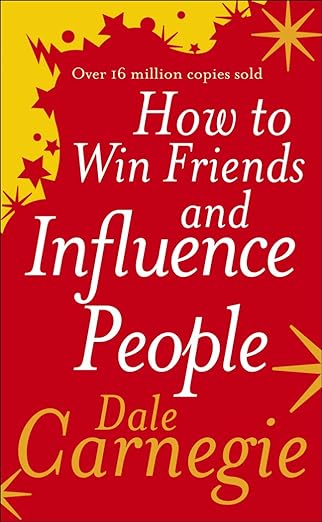“How to Win Friends and Influence People” by Dale Carnegie
Who is it for? for those looking for practical advice and strategies for effective communication, building relationships, and influencing others
Dale Carnegie’s “How to Win Friends and Influence People,” first published in 1936, remains a timeless classic in the personal development genre. This influential book offers practical advice and strategies for effective communication, building relationships, and influencing others. Carnegie’s insights are based on the simple yet profound principle that people are driven by a fundamental desire to feel valued and understood.
The book is divided into four parts, each focusing on critical aspects of interpersonal relations: fundamental techniques in handling people, ways to make people like you, how to win people to your way of thinking, and how to change people without arousing resentment. Carnegie uses engaging anecdotes and examples from historical figures and everyday interactions to illustrate his points. His advice includes principles such as showing genuine interest in others, remembering people’s names, being a good listener, and discussing what interests the other person.
One of the main challenges readers might encounter is applying Carnegie’s principles in today’s fast-paced, digitally-driven world. While the core principles of human interaction remain the same, the modes and contexts of communication have evolved, requiring readers to adapt these time-tested strategies to modern settings, such as social media and virtual communication.
Another challenge is the application of Carnegie’s advice without losing authenticity. Some readers might find it difficult to balance being genuine with employing specific techniques aimed at endearing oneself to others or winning them over. It requires a level of self-awareness and sincerity to apply these principles effectively without appearing manipulative.
Furthermore, some of Carnegie’s ideas might seem simplistic or optimistic for complex, contemporary interpersonal dynamics. Readers seeking solutions for particularly difficult or nuanced relationship challenges might need to supplement Carnegie’s advice with more in-depth psychological or communication strategies.
In conclusion, “How to Win Friends and Influence People” is an enduring guide to understanding and navigating human relationships. The challenge for contemporary readers lies in contextualising Carnegie’s early-20th-century advice within the framework of modern communication and relationships while maintaining authenticity and depth in their interactions. For those willing to adapt and apply its lessons, the book remains a valuable tool for personal and professional development.

